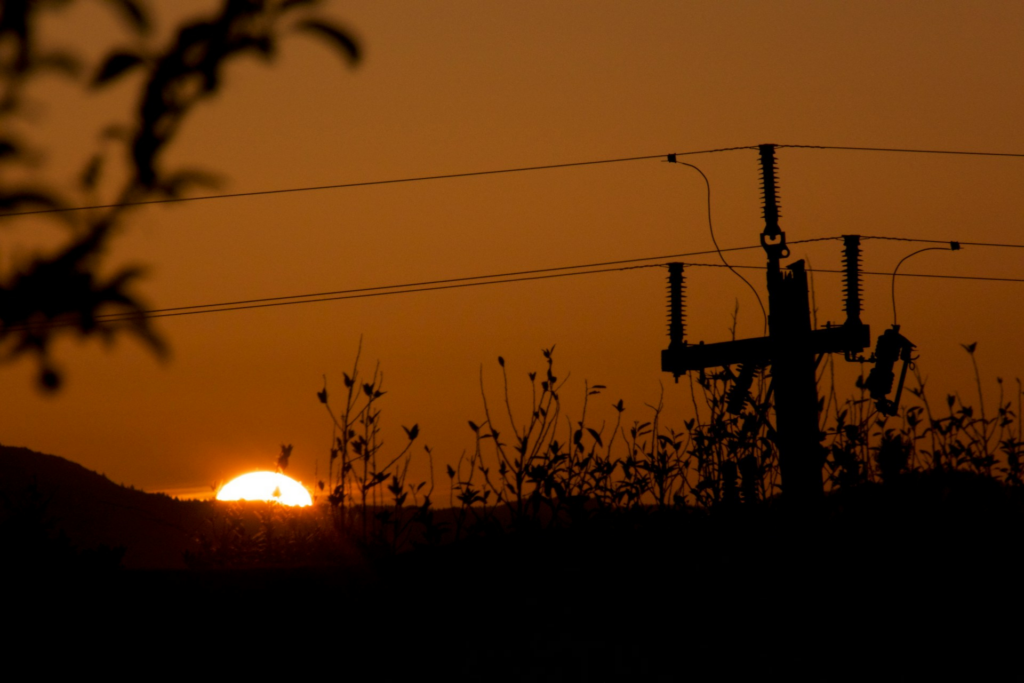Looking at the history of technological innovation in the past 150 years, you’ll find some amazing leaps. Take, for instance, how the combustion engine allowed automobiles to replace horse-drawn carriages, and then the technology quickly evolved to support airplanes.
Computers went from taking up entire rooms to fitting comfortably on our desks. Now, we carry in our pockets extremely powerful computers with access to the world’s collected knowledge. Amid all these changes, one field has evolved at a similar pace to the rest of humanity’s innovations: electrical engineering.
Indeed, the evolution of power systems is a fascinating story representative of our industriousness and societal progress. From the early battles over AC vs. DC to integrating renewable energy into the grid, the power systems we take for granted have always been instrumental in shaping our progress.
The AC vs. DC War: A Turning Point in Power Systems
Since the beginning of time, humans have always found ways to harness energy. Water wheels and windmills were among our early “power systems.” The dawn of the Industrial Revolution in the late 19th century marked a turning point as electrical power became widely available. However, it wasn’t clear yet which form of electrical current would become dominant.
A fierce rivalry erupted between Thomas Edison and Nikola Tesla. Edison’s direct current (DC) system initially dominated the nascent electrical engineering industry. Meanwhile, Tesla accurately pointed out that his alternating current (AC) system offered significant advantages, including allowing AC voltage to be easily stepped up or down using transformers. This benefit makes it more feasible for AC to be spread over long distances, minimizing loss as the current travels from power stations to homes and businesses.
Edison responded with a sensational public relations campaign extolling the supposed dangers of AC. Despite his name brand, which still carries weight to this day, the technical limitations of DC ultimately allowed AC to become the dominant mass power system worldwide by the early 20th century.
HVDC Transmission Technology: The Marriage of AC and DC
Fast forward to today, and AC is still the standard for mass power distribution. But Edison wasn’t entirely wrong, as DC does have some advantages over AC. For instance, DC systems are generally less susceptible to voltage fluctuations, making DC the preferred source for sensitive equipment or applications that need a constant power supply.
DC is also a natural fit for renewable energy like solar panels or fuel cells. That’s why electrical engineers never gave up on DC for powering grids across vast distances. An innovation called HVDC (high-voltage direct current) is now available, which converts AC power to DC for transmission and then back to AC at the receiving end. HVDC is particularly good at transmitting power from remote renewable energy sources (think wind farms or solar power plants) to load centers and back into the public grid.
Microgrids: Power for Local Communities
Electrical engineers have long sought decentralized power alternatives as the power grid faces greater demands and becomes increasingly complex. Now, microgrids are making that dream a reality.
A microgrid is a localized electrical grid that can operate independently or in conjunction with the main grid. It can serve neighborhoods and even small towns without reliance on the central grid. Microgrids incorporate renewable energy sources and load management techniques, making them resilient to outages, brownouts, and natural disasters.
New Energy Storage Options
Whether it’s the central power grid, microgrids, or something in between, energy storage is always a critical component of electrical engineering. With the push for more sustainable and resilient grids, technology is again evolving to meet our needs.
Lithium-ion batteries have emerged as a popular part of alternative energy strategies. With their high energy density and long cycle life, this type of battery has long been the power source of choice for electric vehicles. Now, large banks of lithium-ion cells are used as a storage medium in grid systems. Another emerging storage technology is pumped hydro storage. This solution involves storing energy by pumping water uphill and then releasing it through turbines to generate electricity.
Renewable Energy Integration Challenges
Despite the advances with microgrids and new storage options, significant challenges remain in integrating renewable energy into the public power grid. Engineers must contend with voltage fluctuations, intermittency, and power stability concerns before full integration can become a reality.
Some of the strategies emerging in electrical engineering today include AI-powered grid control systems, a smart grid infrastructure, and demand response programs, which encourage consumers to modify electricity usage patterns to better match supply and demand.
An Always-Changing Energy Landscape
If the history of power systems has taught us anything, it’s that they will evolve to meet our new goals. Clean and renewable energy is the top goal, and electrical engineering practices quickly adapt to meet the needs. As businesses and local communities demand a sustainable energy future, you can count on the always-changing energy landscape to rise to the occasion.
To keep up with the latest happenings in a wide range of industries, follow MRINetwork.

Connect with MRINetwork